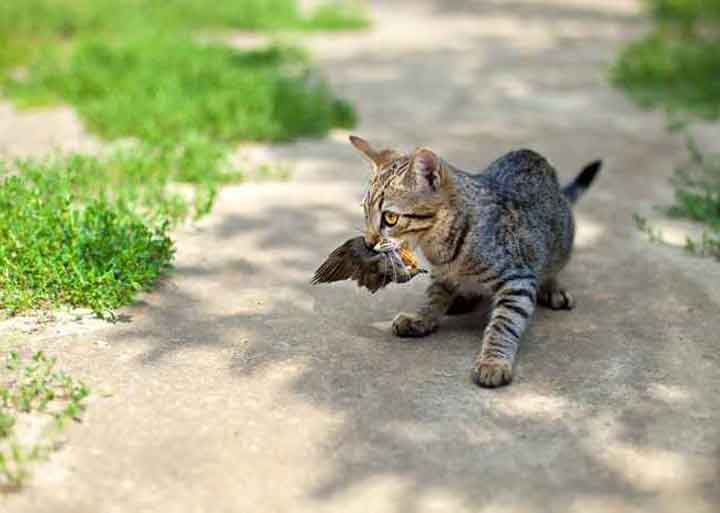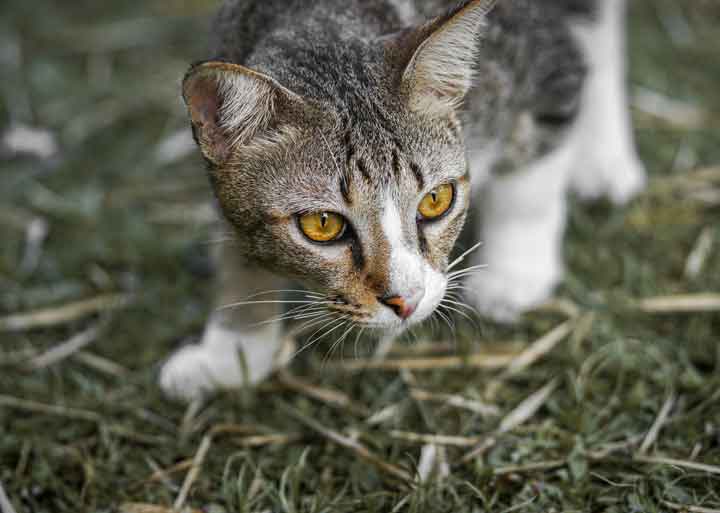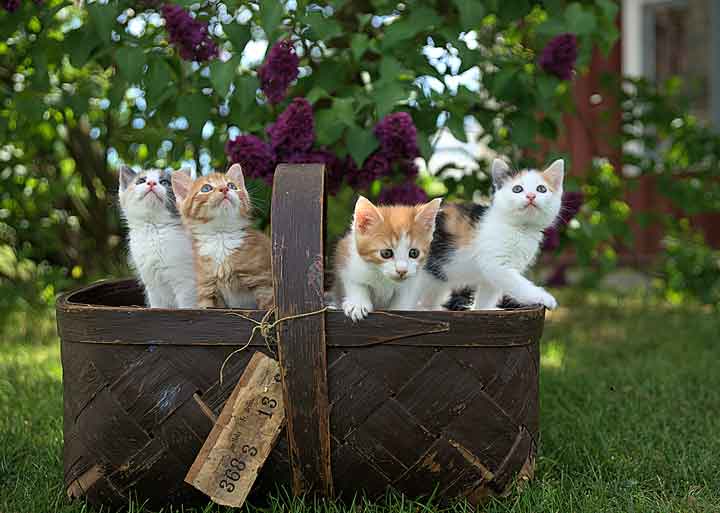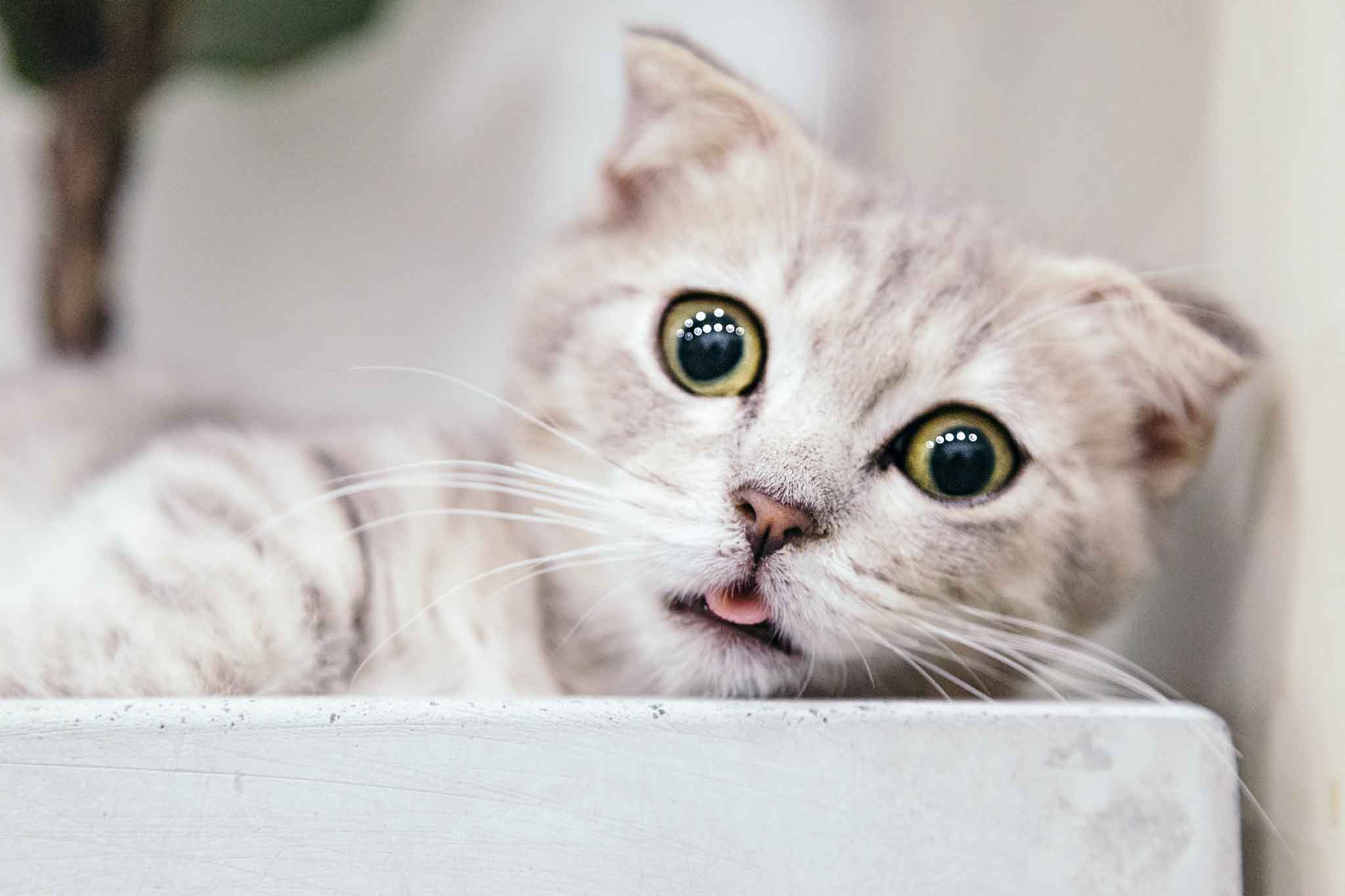Domestic cats and their environmental impact
Cats, cats, cats. For some reason beyond my understanding, domestic cats are everywhere. For instance, they, without the help of anyone else, managed to install the idea of the “meme” in the mentality of the entire human population. Because of the funny videos of cats opening doors, or playing with balls, with the light of a flashlight or playing the piano, these little felines went on to star in the first viral memes in history.
Cats (Felis catus) were presumably domesticated in ancient Cyprus, more than 9,500 years ago. Humanity has had a love / hate relationship with this species, since even, in the 13th century, Pope Gregory IX decreed that they were the reincarnation of Satan on Earth. After these stormy beginnings, today they are the most abundant domestic species on the entire planet.
And while they can be considered as an excellent company, compared to the eternal debate of dogs, since they are much more independent, and do not require as much care as dogs, there is always a dark side that, most likely, most of people does not consider. Far from the ideas of witchcraft and superstition, cats have a significant environmental impact, since they cause the death of millions of species of animals, such as birds, reptiles and small mammals.
In 2014, the Invasive Species Specialist Group (GEEI) of the Species Survival Commission (CSE) of the International Union for Conservation of Nature (IUCN), made a list of the 100 most harmful invasive alien species in the world, and, oh surprise, cats appear in it.
The most effective urban killer

Cats are excellent hunters and kill millions of animals annually. Photo: Vista al Mar
The Ecology Global Network estimated that there could be about 600 million cats on the planet, which could translate into one cat for every 10 human beings, including those who are abandoned. These are divided into about 71 species, according to The International Cat Association (TICA).
Only in the American continent, it is estimated that domestic cats in the wild kill between 1,400 and 3,700 million birds and 6,900 to 20,700 million mammals annually. In the United States, cats, with or without an owner, are responsible for the deaths of between 258 and 822 million reptiles and between 95 and 299 million amphibians.
And the figures are staggering in all parts of the world. In the UK, cats are responsible for the death of 57 million mammals, 27 million birds, five million reptiles and amphibians, this according to a study done over just 5 months. In the Netherlands, cats prey on an average of 141 million wild animals. In Australia, they kill an average of 377 million birds and 649 million amphibians and reptiles annually.
In Central America there are an estimated 11 million domestic dogs and cats, with Costa Rica (62%) being the country where the most families live with one of these animals, followed by Honduras and Nicaragua (50%), El Salvador (40 %) and with a lower percentage, Guatemala (33%) and Panama (35%).
There is, however, no accurate record of how many dogs and cats are abandoned in the region, nor is there the impact that these animals, especially felines, have on the death of other animals, such as birds and reptiles.
A cat extinguished a species of bird in a year

At the end of the 19th century, a single cat caused the extinction of a species of bird on an island in New Zealand. Photo: Ke Vin/Unsplash
In 1894, on Stephens Island, New Zealand, David Lyall was hired to assist the lighthouse keeper for the lighthouse that had just been opened there. At the time, this island was a fairly unexplored and uninhabited place, so Lyall took his pregnant cat, named Tibbles, with him as his company.
Cats feel emotion during a hunt, something similar to what happens when they play with the light of a lamp or a yarn, since they find it amusing. That is why, even if they are not hungry, they will kill a small animal just for fun, so it is usual that they bring their owners gifts such as birds, mammals or small lizards.
And that’s what happened with Tibbles and Lyall. Shortly after being on the island, the lighthouse attendant began receiving gifts, in the form of dead birds, from his cat. All the birds he received from Tibbles, Lyall knew, he was a naturalist by hobby, except for one. This bird was small, olive on the back, pale on the chest, with the body feathers edged with brown. It had a narrow whitish-yellow stripe over the eye, short wings, and a long, straight bill.
Knowing nothing of this species, he sent a stuffed specimen to famous New Zealand ornithologists, including H.H. Travers, with which it was possible to determine what species it was. Known as Stephens’ wren, or Lyall’s xenicus, this small bird, which could not fly, was given the scientific name of Traversia lyalli. The problem arose because Tibbles had her young, and they colonized the island, killing all the wren.
In February 1895, a year after David Lyall arrived on Stephens Island, he wrote: “Cats have gone wild and are wreaking havoc on all birds.” This news reached the New Zealand press of the time, prompting The Press of Christchurch to write an editorial on March 16, 1895. “There is very good reason to believe that the bird is no longer in the island, and as it is not known to exist anywhere else, it has apparently become completely extinct. This is probably a record on the road to extermination. ”
In 1898, a new lighthouse keeper asked the Department of the Navy for ammunition to be able to get rid of the plague of cats that was overflowing the island. 26 years later, the island was declared cat-free.
How to reduce the environmental impact of cats?

There are actions that can be taken to reduce the number of stray pets around the world. Photo: Jari Hytönen/Unsplash
The rescue of stray cats and dogs is an activity that has become fashionable in the world in recent years. There are many organizations and people dedicated to recovering these animals, and then offering them for adoption.
However, and due to the large number of individuals that are abandoned and their subsequent reproduction, the effort of these entities is often insufficient to prevent them from becoming a problem for municipalities and wildlife in general.
In the United States, the Dumb Friends League estimates that there are between 6 and 8 million animal shelters in that country around the world. However, that is not enough to prevent cats from killing 2.4 billion birds. These shelters euthanize between 3 and 4 million animals, which are not claimed by their owners or are not given up for adoption.
Unlike what happened on Stephens Island, the elimination of the population by hunting could not be a very well-regarded alternative at this time. What the experts suggest is immediate vaccination, sterilization and limiting the number of cats per owner. Another measure to prevent domestic felines from reducing the number of birds and other animals they kill is by putting bells on them, as this would allow the animals to be alerted to their presence and to escape.
To avoid the death of wildlife, as well as that of domestic animals that are rescued and euthanized in animal shelters, the World Animal Protection association emphasizes that sterilization and identification of pets are key to this. They also highlight responsible ownership on the part of people, but it is in this case where it may be failing on this issue.
It is important that there is a balanced work between local authorities, who are in charge of legislating in favor of punishments for those people who abandon their pets, as well as educating people to create a culture of responsible ownership.
It must be remembered that no matter how much tenderness and passion cats generate in people, we must always act responsibly. Stray dogs and cats are a risk to human health, and to the lives of millions of wild species.
Source: Pajareando
